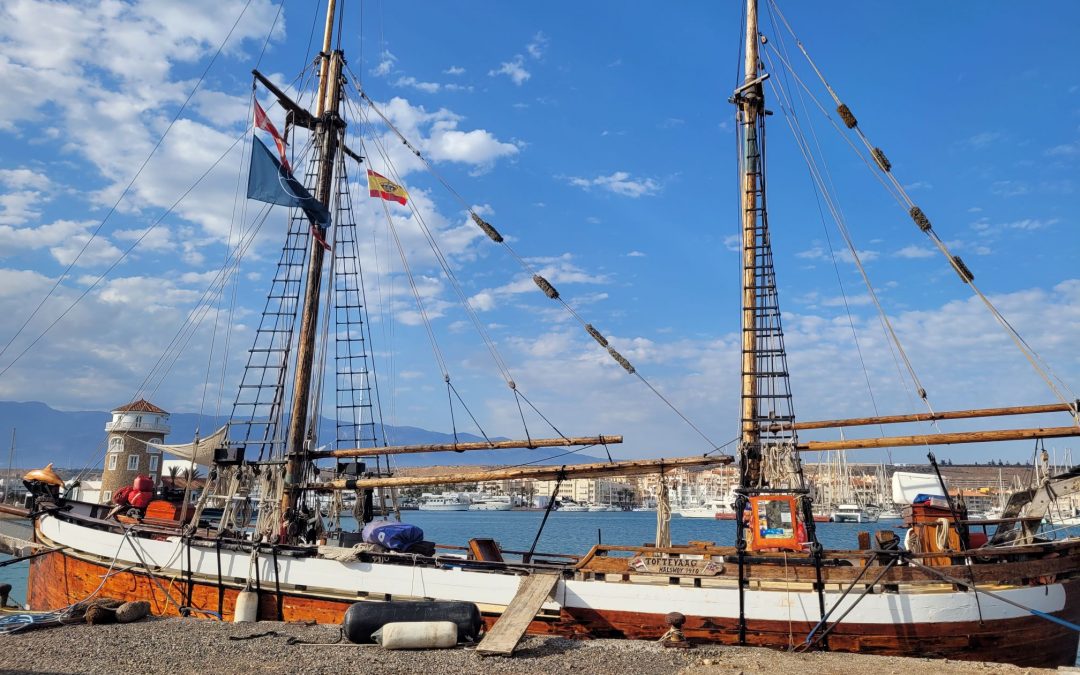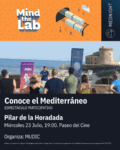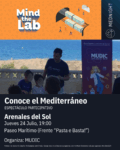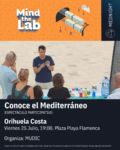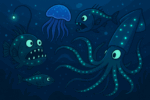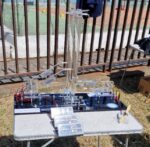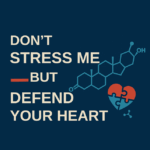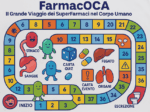Research is most useful when it has concrete implications, being used to inform policies and work alongside stakeholders — crucial to making the right decisions. This is what I discovered during a Mednight-sponsored expedition in the Alboran Sea aboard the Toftevaag, a marine research ship belonging to Alnitak. I am Camille, a 24-year-old graduate with a MA in Development Studies, and I will take you along on our exciting 11-day expedition.
Author: Camille François
Almerimar — Tuesday 23th May 2023 — All of us were relieved to learn that today’s conditions would be much better, and especially, drier. We left the harbour at 7am, pushed by a rather strong wind, but nothing to complain about. It just made lookouts harder and a little more tiring, as the swell and waves tend to hide animals and therefore require more attention and concentration. We sailed near some trawlers in the vicinity of Almerimar, which allowed us to spot some bottlenose dolphins. Trawlers are large fishing boats which uses gear that scrapes and damages the sea bottom, attracting bottlenose dolphins, whose hunting job is made easier by the use of these trawlers. In some places, fishermen are actually an integral part of the ecosystem: for instance, researchers have found that if human fishing disappeared from the Gibraltar area, the infamous pod of orcas living there would also disappear, as their fishing techniques are reliant on human activities. Bottlenose dolphins are not quite as reliant, but some pods rely rather heavily on fishing boats, which is a worrying behaviour.
In the early afternoon, we arrived near our “pilot whales’ sea canyon”, and we had the good fortune to spot these blackfish! There were several sub-groups spread over the area, and we spent two hours slowly sailing from one group to the next and collecting as much data as possible. The pilot whales had a mild interest in the ship and were very calm, so we were able to follow them and approach them, capturing useful underwater footage with the GoPro, as well as thousands of photos from the deck of the ship. The only noises to be heard were the purr of the ship’s engine, the click-click-click of the cameras, and the high-pitched noises of the pilot whales. Our two hours went by in the blink of an eye, and soon, we had to turn around and head back to the harbour for the night. Volunteers found this day quite exciting, as many approached these cetaceans much closer than they ever experienced before.
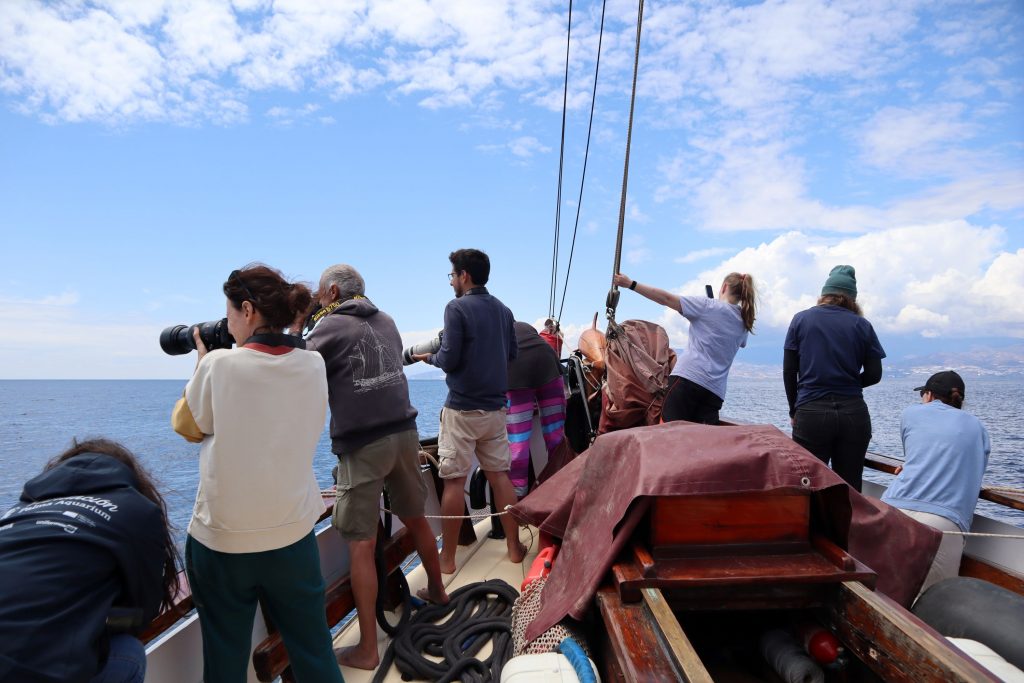
Almerimar to Cabo de Gata — Wednesday 24th May 2023 — Good conditions were planned for the day, so we made an early start, departing from the harbour at sunrise. We were rewarded by some dolphins a few minutes later, which was rather unexpected. Unfortunately, we had not officially started our transect, so their sighting was not officially recorded on our database — we only count animals we see while “on effort”, otherwise it would skew our data. Shortly after, while having breakfast on deck, we spotted some bottlenose dolphins which came closer to our boat for a few minutes. That was a promising start for our outing! The rest of the day was quieter, but no less exciting, as we spotted three turtles basking in the sun. With a glassy sea under a cloudy sky, basking turtles are easy to spot: they look like a black or brown, floating oval on the horizon, and they do not move, making it easy to keep them in sight and approach within a reasonable distance.
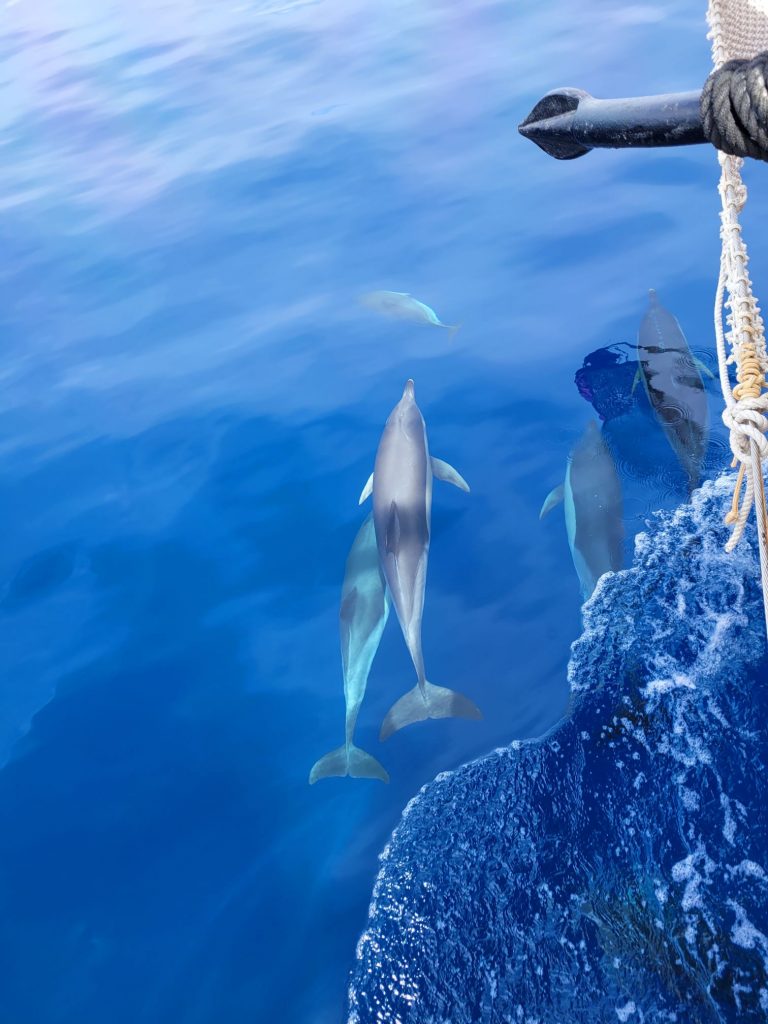
We had hoped to see some fin whales in the surroundings, but to no avail. Cabo de Gata is a “corner” of the Iberian peninsula, and in late spring, fin whales migrating from the NorthEast have to round this corner to go towards Gibraltar, coming very close to the coast.
Just before sunset, we dropped anchor in the quiet, scenic bay of Los Genoveses in the Cabo de Gata Natural Park. Small, pink jellyfish swam around our boat, preventing us from swimming in the bay, but we enjoyed a nice dinner on deck with a view of the natural park. Our peaceful evening was only troubled by the important swell rocking our ship from side to side, making the wood groan loudly. The swell also made it harder to sleep than usual as some feared rolling right out of their beds!
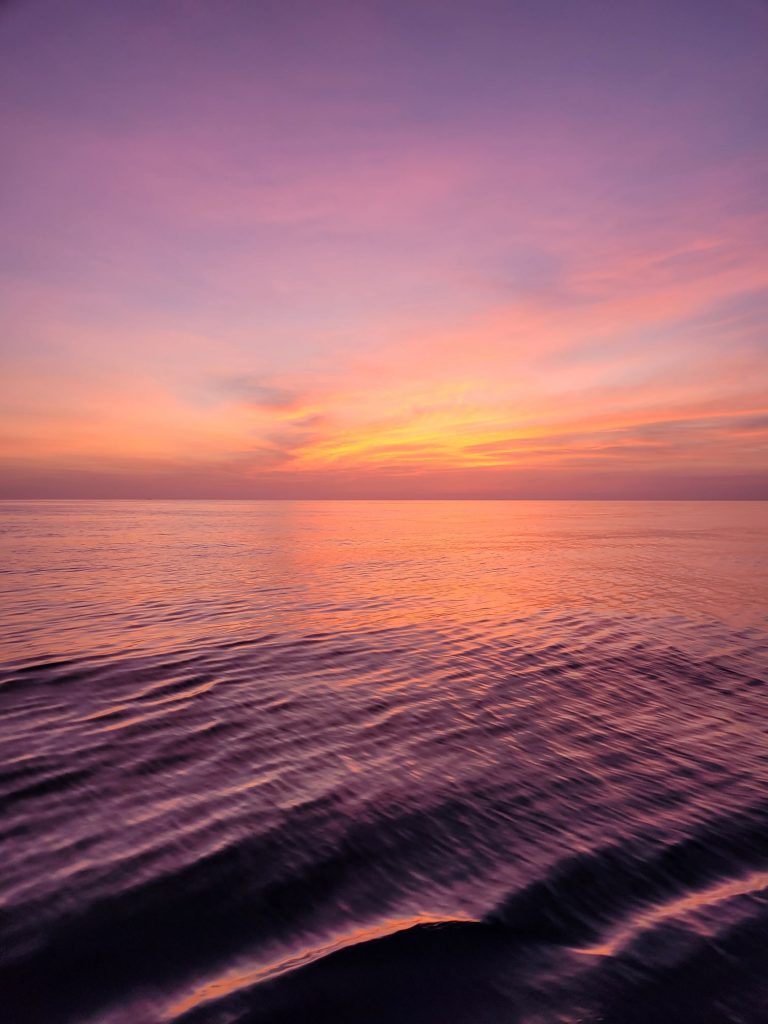
Cabo de Gata to Almerimar — Thursday 25th May 2023 — At 5am, a couple of volunteers woke up to lend a hand to the crew. We had to raise anchor, and on such an antique ship as Toftevaag, this is done manually. We pulled on the chain as if playing tug-of-war, giving our all to raise the heavy bit of metal that kept us anchored in the bay for the whole night. We were rewarded by a breathtaking, starry sky, with the Milky Way spreading across the bay’s sky. Soon enough, we returned to our warm bunk beds below deck, leaving our captain and bosun to navigate our ship eastward. Two hours later, all hands were on deck, motivated to start the day, and hoping to have some good sightings. Despite rather good conditions, we only saw a few dolphins far away, which did not allow us to record as much data as we could hope for. We also spotted some ghost gear, which sadly happens more frequently than animals’ sightings. It is obviously less exciting, but just as important to spot, as we record their presence before removing them from the sea. As soon as the ghost gear is sighted, the person at the bow points toward the object, providing directions to the person navigating at the back. Another one or two people grab the hook and/or dip net, ready to catch the floating object. It may take a few tries to catch it, but we cannot leave it at sea, as it represents a risk for both animals and ships. The nets or threads can easily entangle around a ship’s engine or an animal’s body. As Alnitak could see through its rigorous data collection, ghost gear is on the rise in the Mediterranean Sea. Every ghost gear we observe is photographed, its coordinates are recorded, and the information is inputted into the Observadores del Mar website as part of the citizen-science project “Pesca Fantasma”. The website is easy to use: anyone can create a profile, record its sightings, and read about the protocols to follow when encountering ghost gear or entangled animals. The aggregation of all this data allows to identify zones with a higher concentration of plastic, such as where underwater currents are pushing it. The data can also provide some information about how fishing gear can be improved. As part of the LIBERA Project with Ecoembes and SEO/BirdLife, Alnitak is involved in the topic of ghost gear, and strives to engage stakeholders such as harbours, fishermen, and sailors, and to educate the public, for instance by doing exhibitions in harbours.

As I did not have a shift in the late morning, I decided to take a short nap in the hammock on deck — my second favourite place on board after the mast. When I woke up in the wildly swinging hammock, I recognised Almerimar in the distance. Our plans had changed while I was asleep — the afternoon would be too windy to continue our lookout, so we were heading back to port, rather than continuing along the coast. We arrived in Almerimar at 1pm and spent the afternoon doing office work and resting.

